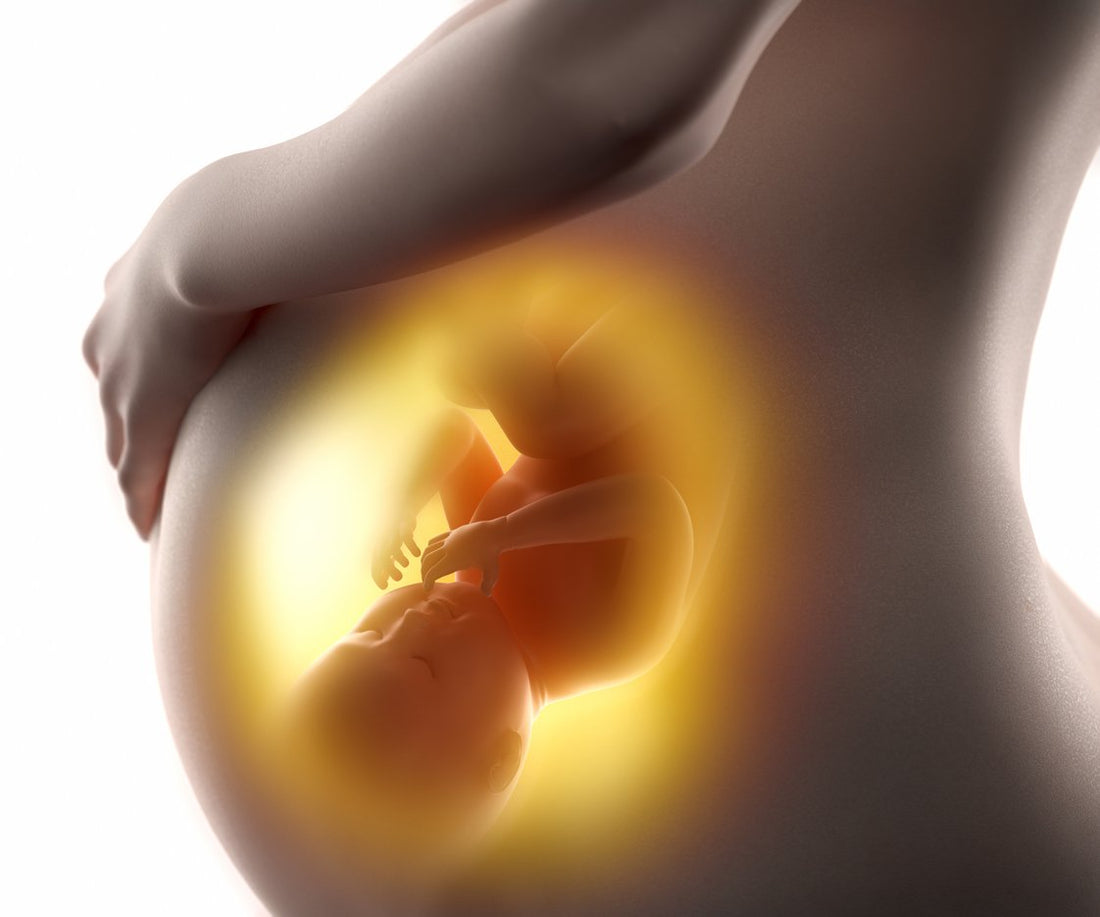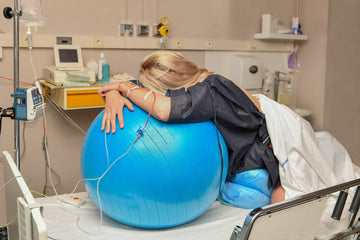PROM: The Premature Rupture of Membranes

The '24 Hour Window’
The 1950’s and 1960’s was a time in which doctors created the timeframe for women to labor and birth. Once the water broke, women were ‘on the clock.’ For some reason, this outdated tradition has continued to be common practice in hospitals (and birth centers) across the country. For liability purposes, most birth centers cannot extend a woman’s birthing time past 24 hours if her water has broken, although some centers do have longer timeframes. Hospitals, however, are known to give an 18-24 hour window. But why?
Does something magically happen after 24 hours?
No. Actually nothing happens.
That’s right. There are no sudden increased risk factors after 24 hours. There is not a medical emergency needing a c-section. There is absolutely nothing wrong with the body that does not start labor immediately after the water has broken naturally.
It’s important to note that we are discussing PROM – Premature Rupture of Membranes. We are not talking about artificial rupture of membranes (doctor breaking the water). Also note, that this information relates to a woman who is 37 weeks pregnant or further along. Anything before 37 weeks is considered Preterm Premature Rupture of Membranes (PPROM). Preterm mothers can seek medical intervention to try and stop or stall labor to keep baby in the whom and healthy for as long as possible.
A 1992 study reveals: 45% of women will naturally go into labor within 12 hours of water breaking. 77-95% of women will naturally go into labor within 24 hours of the water breaking.
More recent studies show: Over 93% of women whose water breaks naturally, that do not go into labor within 24 hours, will naturally go into labor within 48-72 hours. We do not know how long a healthy labor can go before starting, as no study has allowed a mother to go longer than 72 hours before inducing her. Science also shows that first time moms who experience PROM are 20% more likely than a mother who has labored previously to exceed 24-48 hours.
A 2014 study revealed: Women who allowed labor to begin on its own had a 2.5% cesarean rate, while those with PROM who opted to be induced at any point before labor naturally began, had a 15.5% cesarean rate. The researchers concluded that the overall increased risk of c-section for those who are induced due to PROM is 6.8 times higher than mothers who wait for labor to begin naturally.
Are you at risk for PROM?
Most women whose water breaks before labor do not have a risk factor. It is important to note that there is not one specific cause for premature rupture of membranes. Certain Risk Factors Include:
- Poor nutrition or dehydration
- Smoking during pregnancy
- An infection in the cervix, uterus or vagina (Yeast Infections for example)
- Prior cervical surgery or biopsy
- Cervical exams performed to check on dilation status: Weekly vaginal exams starting at 37 weeks cause a three times higher chance of having PROM
- Having your membranes swept
- Too much stretching of the amniotic sac (this may happen if there is too much fluid, or more than one baby putting pressure on the membranes)
- If you were pregnant before and had a PROM or PPROM
There is also the chance that the bag of waters breaks naturally, before the start of labor, for no other reason than nature. The fetal membranes are programmed to weaken towards the end of pregnancy, and Braxton Hicks contractions apply pressure to the amniotic sac. Once the weakest area gives way to the contractions, the bag will break whether true labor has started or not.
Ways to help prevent PROM:
Increasing Vitamin C: Research has shown that increasing your vitamin C intake can strengthen the bag of waters. There have been studies say the opposite, but they included combination vitamins and not just vitamin C.
Increasing Omega 3’s: High Quality Fatty Acid Supplements have been proven to lower inflammation. This allows less pressure on the bag of waters and can prevent PROM.
Avoid Cervical Exams: While it may be interesting to know if you are dilated, it truly means nothing. No vaginal exams will predict when you will go into labor. But every check is a risk for infection or a link to causing another medical intervention.
Risks of PROM:
Before 37 weeks the main concern is to protect the baby by delaying labor as long as safely possible. There are also concerns that a pre-term baby may not be large enough or in the right position to prevent a cord prolapse -the cord descending the vaginal canal before the baby. The final concern will be maintaining enough fluid in the uterus for the baby's lungs to develop properly. But if you are beyond 37 weeks, all real dangers from PROM are gone. Your body replaces the water every three hours, so there is no fear of a "dry birth" even if you leak through your whole labor.
There are two possible problems that having your bag of waters broken may cause:
- Infection: The chorioamnion (or membrane) is a physical barrier to bacterial invasion during pregnancy, so when the water or membranes break, this means the mother is at higher risk for infection. This is why avoiding vaginal exams is so important with PROM.
- Drop in Fetal Heartrate: Babies whose water has broken are more likely to respond to contractions with a dipping heart rate during active labor, possibly because of the greater pressure on their heads. As long as the heartrate recovers, all is ok. But this is often the moment that a mother will be wheeled back for a c-section over concern for the baby. But, again, as long as the heartrate recovers between contractions, everything is ok.
Most doctors prefer to induce labor to avoid infection, but remember "When membranes rupture, fluids wash out of the vagina, which means infective bacteria must migrate upstream, against the current, to enter the uterus."
Waiting 24-48 hours or even more before inducing labor should be considered safe as long as fingers and internal monitoring devices are kept out of the vagina.
There is absolutely no correlation to term (38+ weeks) PROM and increased fetal deaths.
Signs of Infection:
- According to the American College of Obstetricians and Gynecologists, infection can be diagnosed if a mother has a temperature > 100.4 F and usually at least one other indicator: fast fetal heart rate, fast maternal heart rate, abdominal pain, high white blood cell count, or foul smelling fluid.
- The American Academy of Pediatrics has even stricter standards for diagnosing infection: a mother’s temperature of > 100.4 F and at least TWO other indicators: fast fetal heart rate, fast maternal heart rate, abdominal pain, high white blood cell count, or foul smelling fluid.
Resources:
http://www.ncbi.nlm.nih.gov/pubmed/24259235
http://www.ncbi.nlm.nih.gov/pubmed/1785268
http://www.ncbi.nlm.nih.gov/pubmed/24259235
http://www.ncbi.nlm.nih.gov/pubmed/3526572
http://www.ncbi.nlm.nih.gov/pubmed/16516962
http://www.ncbi.nlm.nih.gov/pubmed/24259235
http://www.ncbi.nlm.nih.gov/pubmed/18404134
http://www.ncbi.nlm.nih.gov/pubmed/?term=18515514
In the event of a medical emergency, call your doctor or 911 immediately. This website does not recommend or endorse any specific tests, physicians, procedures, opinions, or other information that may be mentioned on this site. Reliance on any information provided by this website is solely at your own risk.







